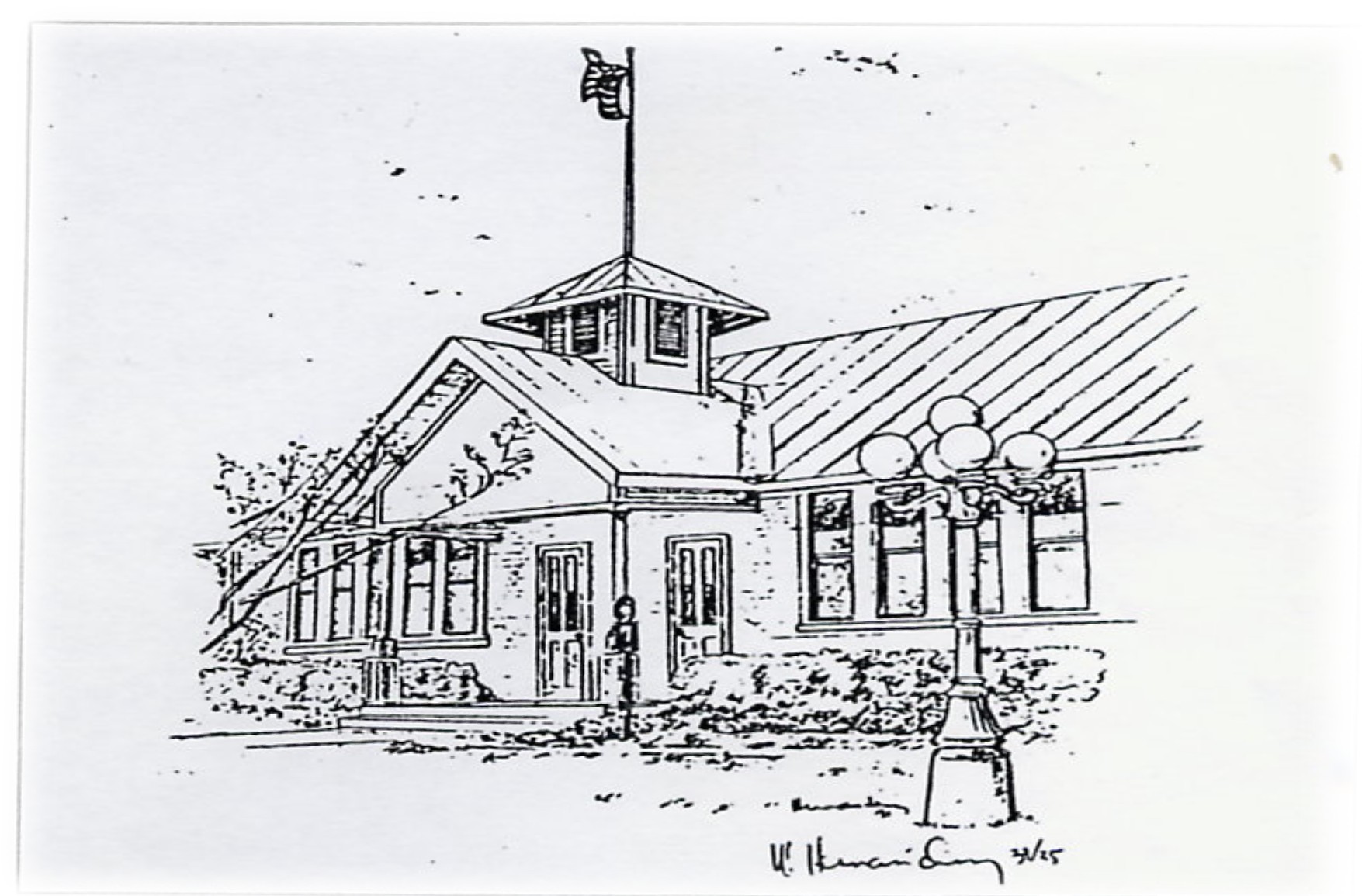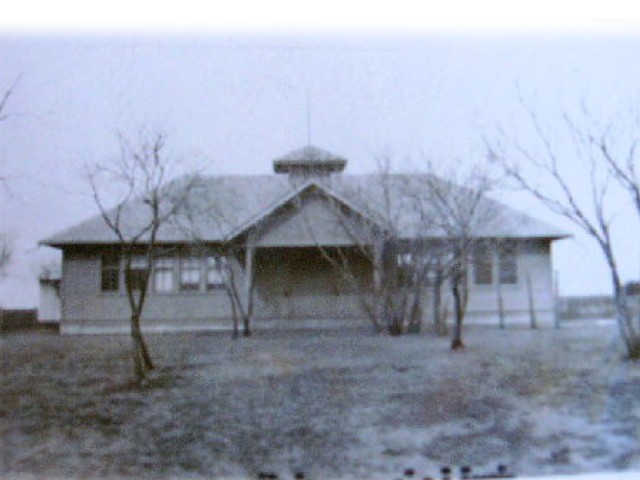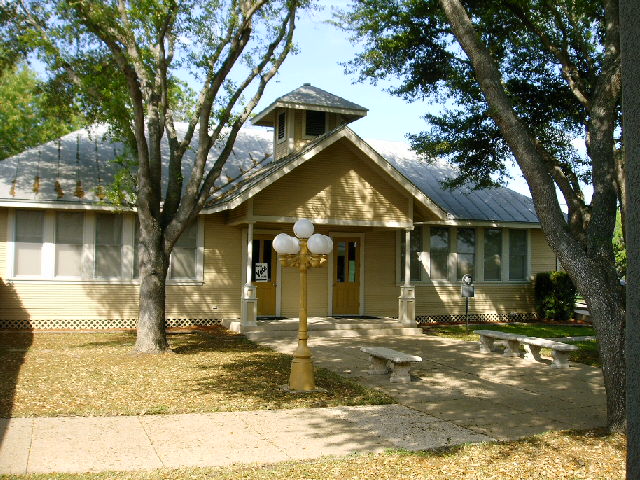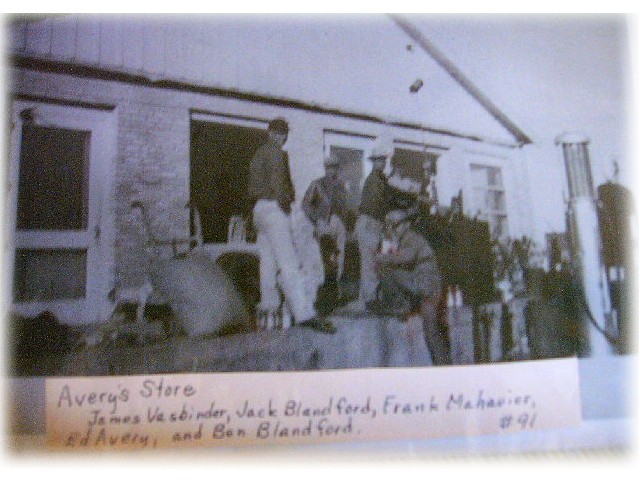



Mmmmmm. Country living. Wildflowers, rattlesnakes, cactus, coyotes. Get up at sunrise and milk the cows. Gather the eggs. Feed the chickens. Finish the chores and off to school. Walk for miles. Listen to cicadas, crickets, bees. The happy buzzing and chirping of life. Learn ‘bout readin’, writin’ and ‘rithmetic. Home again. Feed the cows. Round up the chickens in the coop. Homework. Maybe a bath tonight? And finally, sleep. Up again the next morning and repeat the process. Such was the life of children living on farms and ranches in the community of Boldtville, Texas, located in east Bexar County.

The school was rectangular in shape, and had one long room. A stage was built at one end of the room. The rest of the room was divided in half by a folding partition when used as classrooms. When the partitions were folded back, the room could be used as an auditorium or for other group functions. Each room had four transom windows over the dividing wall for light and ventilation and eight exterior windows. The rooms were heated with two large pot-bellied stoves, and drinking water was contained in a large cistern filled with rainwater. The building was topped by a belfry with a bell that was used to ring the students in. The exterior had wood siding, a tin metal roof, and a large front porch. There were two front doors so that students could enter the appropriate room for their grade level. Two outhouses were built, one for each gender, and privacy walls were built in front of them. The outhouses were used until the school closed in 1960. (East Central School Museum archives, booklet and plaque)
In the 1930s a separate one-room building was erected for the higher grade levels. That building was eventually moved to the original East Central High School campus a few miles east of the Boldtville School. Mrs. Virginia Cover Barnhill taught grades five, six, eight and nine in that building for the 1946-1947 school year. Mrs. Barnhill’s students arrived at 9 a.m. and stayed until 4 p.m. She had 17 students that year, and there were no seventh-graders. When her lone ninth-grade student stayed home, it lightened her load for a whole grade level. There was a major flood in the area in September, 1946. Two Boldtville residents, Mary Jane “Dolly” (Blandford) Duke and her 21-year-old son, perished during the flood. Dolly and her son were holding onto a pole when her son was swept away by the rising flood waters. Dolly let go and went after him. Their bodies were recovered after the flood waters receded. When Mrs. Barnhill returned to work after the flood, she was horrified to discover that her schoolroom had been used to store the two drowning victims on wood cots. She could still see the muddy leg prints of the cots on the floor. The Boldtville community, especially the Duke and Blandford families, were in great distress over their loss. (Barnhill interview and East Central School Museum booklet)
The Boldtville School served continuously from 1919 to 1960, when it was closed. It was only serving three grade levels at the time of its closing, as more schools in the area were being built to accommodate the slow but steady population growth. Mrs. Lydia Dudek, a student at Boldtville in the 1920s, was one of its three teachers when it closed. The building was then used for storage for the next twenty years. (East Central Schools Museum plaque)
The interior of the building was modernized with air conditioning and indoor restrooms. The existing hardwood floors were refinished and preserved. Very few other changes were made to the interior of the building. The exterior of the building had foundation work performed, and the wood siding and tin roof were restored to their original condition. The restoration earned the school a Building Preservation Citation from the San Antonio Conservation Society. It has also been awarded a Texas Historical Commission Official Historical Marker and a Beautify San Antonio Award. It received a first place award from the Texas School Public Relations Association, and a minigrant of $2,000 from the Texas Committee for the Humanities, a state program of the National Endowment for the Humanities, for further historical documentation and displays. (East Central Schools Museum booklet and archives)
Today the building is a museum and is the site of board meetings of the East Central School District. It houses memorabilia of the old Boldtville School and 18 other rural schools from eastern and southeastern Bexar County. Mementos were collected by a devoted and dedicated group of former students and teachers. In 1982, Mary Lee (Blandford) Toothman, a former student, decided to have a Boldtville School reunion at Mesquite Hall (a local dancehall owned by the Mesquite Trail Riders Association). She invited all of the former students and teachers she could reach. They all brought photographs to show and stories to share of their school days. These items were gathered by Jackie Christenson and she published the stories in the School Bell Times, a quarterly newsletter of the East Central I.S.D. She also requested more donations from the community, and there was a wonderful response. A group of former teachers and students met informally several times and decided to start an historical association, and, in 1984, the East Central Historical Group was formed. Binders containing documents and pictures for each rural school were compiled. On the walls are plaques and pictures of each of the rural schools represented in the museum. The Avery family donated the display cases from the old store, and they house many artifacts donated to the museum, such as inkwells, the metal lunch buckets the students used, as well as report cards and teacher lesson plans and other items. There are old student desks, a teacher’s desk, and an antique (circa 1880) 300-pound bell donated for the belfry. The bell was donated by local resident Oscar Vaughn, who had been saving the bell under a wheelbarrow for 10 years, hoping a worthy cause would come along. He donated the bell on his 81st birthday, and it now hangs proudly in the bell tower. The opening of the museum on January 12, 1986 was the first official event for Bexar County of the Texas Sesquicentennial celebration. (Barnhill interview and letter; and East Central Schools Museum archives) Every small community needs a general store. Henry Klondike Stuckenberg built a store at the northwest corner of Foster Road and Sulphur Springs Road. He named it Klondike’s Store. Mrs. Albert F. (Carolina) Boldt was the storekeeper while Mr. Stuckenberg was away in the military during WWI. After the Calaveras School was torn down in 1919, Mr. Stuckenberg salvaged the lumber from the school and built a larger store (East Central Schools Museum archives). Later, in 1932, Ed and Ruby (Blandford) Avery leased the store and renamed it Avery’s General Store. They bought the store in 1943 or 1944, remodeled and enlarged the building, and ran the store until Mrs. Avery’s health forced her to close the store in 1979. Mr. Avery had passed away in 1972. The store was a very popular attraction for the area. It had a large sewing notions section in its early years of operation as most clothes were still hand made at that time. The shoe department was also well shopped. It was known to sell Levi’s Jeans at really low prices, and shoppers came from miles around for the good bargain on blue jeans. Mr. Avery started a meat department at the store, which also led to the development of a meat route in a nearby area. Students from the Boldtville School would run across the street at lunch time for a quick and inexpensive meal. Mrs. Avery would prepare and sell sandwiches for 10¢ (1950s prices). She had a large chilled display case which contained hunks of ham, salami and bologna. She would take out and slice the meats on a large three-legged cutting block where she also prepared the student’s sandwiches. She and her husband delighted in the visits from the schoolchildren. They also sold chips for a nickel and sodas for 6¢, and fresh fruits were available. Mrs. Barnhill related that the only crime she could remember in the Boldtville area happened at the Avery’s store, when Mrs. Avery was beaten and robbed in 1977. She closed the store shortly thereafter. The building still stands, but with a new owner and use. (Avery letter and East Central Schools Museum booklet) The other entity at the heart of this community is its only church. In 1908, eight families in the Calaveras Community: Alsbury, Blandford, Downum, Duke, Hunnam, Mahula, and two Russell families – formed the Union Sunday School, with Reverend Baxter D.D. Greer serving as student supply while he was attending Austin Presbyterian Theological Seminary to work on his B.D. degree. A small building was erected on land donated by Charles Mahula (Union Sunday School letter). In August, 1909, a weeklong revival meeting was held by Rev. Greer, and it was decided that a church should be organized. On September 17, 1909, the congregation formally organized as the Calaveras Presbyterian Church. Rev. Greer led the church until August, 1910, when he left to study for his Master’s and Doctor of Divinity degrees at Princeton University in New Jersey. In 1911, the church members received permission to change the name of the church to Greer Chapel. The church had sporadic services due to the lack of available ministers and was finally dissolved. The membership was transferred to a church in San Antonio called the Pine Street Presbyterian Church. That church later merged with Highland Park
Presbyterian Church. In 1928, Dr. Greer became pastor of Highland Park and again started visiting the Calaveras community, which had by then become known as Boldtville (Union Sunday School letter). He began having worship services and Sunday School classes every Sunday afternoon in the Boldtville School. After a disagreement about the use of the Boldtville School for dances on Saturday nights, the church was denied the use of the school building (Boldtville Community letter). The church needed its own home, and Albert Boldt donated ½ acre of land for that purpose. A groundbreaking ceremony was held on December 2, 1945 (minutes-Highland Park), and 60 members of the community signed a petition to the Presbytery of West Texas to form the church. The church was built in 1950, and was formally organized as Boldtville Community Presbyterian Church on October 26, 1952. The church, now called Boldtville Presbyterian Church, is located at 6631 New Sulphur Springs Road across from the Boldtville School. It has since bought more land and constructed two Sunday School buildings, and has about 100 members. The church has two beautiful stained glass windows, which were dedicated to the memory of John and Mary Blandford, two early members of the Union Sunday School and a founding family of the community.
Albert F. Boldt was a uniquely generous and respected man in his community. He donated land for the school and church. His blacksmith shop and home, which were located between where the school and church now stand, burned to the ground and were never rebuilt. The old Sulphur Springs Road, which originally ran in front of the Boldtville School, was rerouted behind the school and in front of the church. It was renamed New Sulphur Springs Road. The remains of the blacksmith shop and the Boldt home are forever sealed under the asphalt topping of the new road. (East Central School Museums archives) Boldtville is a unique community, too. Families that have been in the area since the 1870s are still there today. Its population is hard to determine because it does not have any defined geographical boundaries. There are new homes, and many new ones are on the way. Farms will become subdivisions. That is not unique; it is happening everywhere. But what is unique about Boldtville is that once you have experienced its people, its feeling of community pride, and the investment of so many to keep its spirit alive, you know it will never cease to exist. Members of the Avery, Barnhill, Blandford, Boldt, Champagne, Duke, Dixon, Gembler, Griffin, Mahula, Farmer, Uecker, and Vasbinder families and others, many of whom still live in the area, will see to that. In Memoriam
It wasn’t always called Boldtville. From the mid 1800s until 1919 it was known as the Calaveras community. Calaveras was home to many farmers and ranchers, and most of them were of German, Czech, Polish and English descent. It had a small, one-room school and teacher's cottage built on two acres of land donated by C. Henry Ech terhoff on October 12, 1891. It was located near the present day Lodi Road. The school opened in 1891 and closed in 1919, and its original trustees were Albert F. Boldt, Louis Brehm and Joe E. Halbardier. Some of the families living in the Calaveras area were also the same founding families of Boldtville and they included the Adams, Alsbury, Avery, Blandford, Boldt, Champagne, de la Rosa, Dixon, Duke, Farmer, Gembler, Griffin, Haecker, Halbardier, Koerbel, Mahula, Muir, Scheel, Schubert, Sultenfuss, Uecker and Vasbinder families. Many of these same families still reside in the area today. (East Central Schools Museum, plaque, archives and booklet)

The year 1919 was pivotal for the Calaveras community as the trustees of the Common School District #20-Albert F. Boldt, Joseph Halbardier, Sr., and Robert Uecker-visited a few of the newer schools in Bexar County and decided it was time for a new school in the Calaveras community. Albert F. Boldt, also a local blacksmith, donated an acre of land across from his home on Sulphur Springs Road for the new school. The acre of land was originally part of the Augustin St. Martin Spanish land grant. The trustees contracted with Fritz Gembler to build the school, and it was built and opened in 1919. The original trustees of the school were Henry Gembler, Louis Eisenhauer, and R. W. Blandford. For many years, grades one through eight were taught there. The community of Boldtville was named after the Boldt family, which generously donated land for the new school and a church. (East Central Schools Museum booklet, archives and plaque)


Students and teachers performed all of the janitorial duties at the school. Students were expected to go to the woodshed and bring in wood for the pot-bellied stoves for the next day. Teachers would arrive early to get the fire started to warm up the classrooms before the students arrived. Students also swept floors and cleaned the erasers and the chalkboards. Many students took their lunch in small, round metal buckets. Some of the students walked to school on dusty, unpaved roads, and some rode horses. (Barnhill letter)

In 1949, the Consolidated Common School District was formed under the supervision of Jack L. Coppage, and 15 rural schools were united into one school district. The schools were Adkins, Boldtville, Campbell, China Grove, Rock Springs, Elmendorf, Goebel, Highland, Midway, Salatrillo, Sayers, Southton, St. Hedwig, Tablito and Utzville. That school district today is known as the East Central Independent School District, which encompasses 264 square miles. It has one high school, two intermediate schools, one middle school, five elementary schools, with a new middle school under construction, and an enrollment of 8,130 students as of March, 2006. (Barnhill interview and letter)

In 1980, another pivotal moment occurred in this school’s history. The East Central ISD had a new superintendent, Dr. Anthony Constanzo, who rediscovered the old school building and its charm. He and the district’s board of trustees decided the school and its surrounding land would make a good location for a new administration complex, and in 1982 the plan was approved. The school building would be renovated and restored. Its renovation was coordinated by the public information officer of the school district, Jackie Christenson. (East Central Schools Museum archives)






The Avery’s built a home across the road from the store in 1935 at a cost of $900. It had two bedrooms, a living room, a dining room, a kitchen and a bath. They had a generator to run the refrigerator and two light bulbs. They were one of the first households in the area to receive electricity and a telephone. The telephone was the crank type and there were nine families on the same line, so nothing was secret. In 1948, they added another bedroom and a water heater. Mr. Avery also became an electrician and wired many of the homes in the area as electricity became more available. With the help of his son Ed, Mr. Avery wired the home of R. W. “Rufe” Blandford, a neighbor and brother to Ruby Avery. Ed Jr. was impressed with his Uncle Rufe’s high copper antenna that allowed him to use a crystal set, an early radio kit. (Avery letter)







Virginia Barnhill Interview
Boldtville Community, Yesterday and Today; by Virginia Barnhill
Avery's General Store; a letter from Ed Avery, Jr.
Bibliography & Acknowledgements
This web site is dedicated to the memory of Gladys Blandford Claridge, who attended the Boldtville School from 1928 to 1936, and was a founding member of Boldtville Presbyterian Church.
She was the daughter of R.W. and Lillian Blandford, and was this author’s Mom. 

